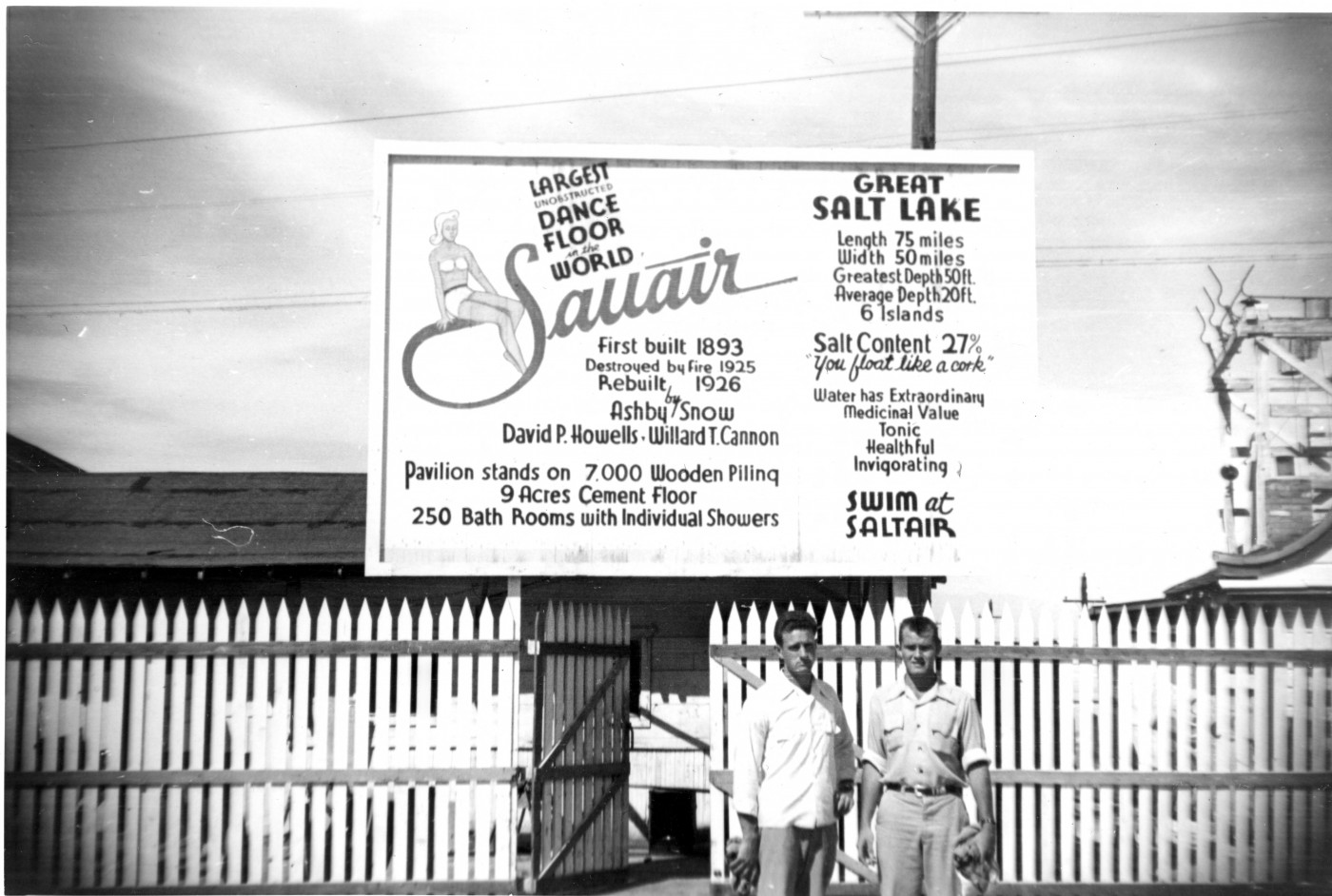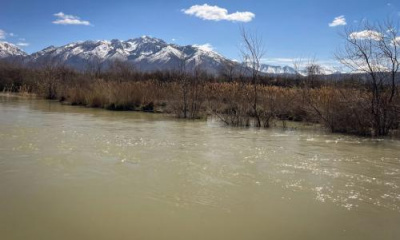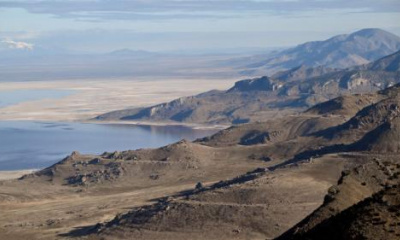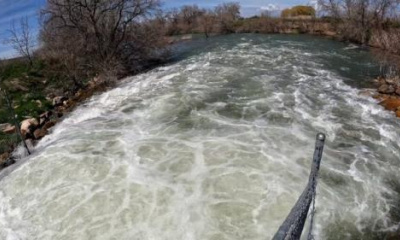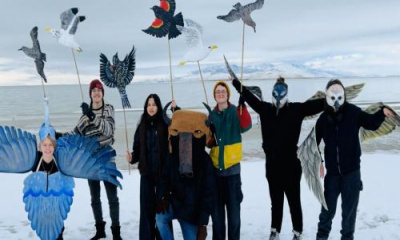Here’s a question that catches people off guard: What would happen if Utah is successful in saving the Great Salt Lake?
For the past two years as the lake has been the subject of intense public scrutiny by Utahns and the world alike, the focus has been on the disaster posed by the disappearing lake. Toxic dust storms, food chain collapse, bird die-offs.
But what if we flip the question and wonder: What opportunities open up if we save the lake?
That’s the goal of this series of articles by The Great Salt Lake Collaborative.
What if the Great Salt Lake remains a key natural resource at the center of a thriving ecosystem and economy? What if city planners and architects and homeowners thought about water when they designed their homes, yards and communities? What if farmers were able to save land and water growing alfalfa and maintain their family business? What if Utahns returned to the lake’s shores and treasured it like Zion’s National Park?
What if the lake rebounds and the world turns to us to find ways to save endangered habitats?
We’ve asked experts to help lay out a vision of what life in Utah could look like should the state rally to save one of its most iconic features. It is, of course, impossible to predict the future, so the outcomes discussed in these articles are hypothetical. But each scenario is grounded in reality and represents a blend of scientific research, new ideas deploying here in Utah and around the world, and evidence from the history of the Great Salt Lake. Each will highlight opportunities within agriculture, industry, recreation and daily life that could be accessed by restoring the lake—or ultimately lost with it.
Part 1: There are, experts say, alternative solutions that would allow Utah farms and the Great Salt Lake to not only coexist, but thrive side-by-side. For local farms to achieve financial sustainability, the cost of producing food locally must decrease dramatically. And many strategies for getting more water to the Great Salt Lake could also improve the financial outlook for local farms. The Great Salt Lake and farms can save each other. Here's how.
Go deeper:
- Farming goes High Tech: A Vineyard, Utah, based start up called Renaissance Ag is growing "fodder biscuits" in a vertical farm that saves water in animal food production.
- Learn how Utah's water banking program could help farmers who are becoming more efficient with their water lease what they've conserved in this November 2023 KUER story.
- Read about the state’s efforts to save water on farms — and if that water is making it to the Great Salt Lake in this November 2023 special report by Great Salt Lake Collaborative partners. Includes a searchable database of the Utah companies that received $65 million in taxpayer funds.
Part 2: Conservation and city design are inextricably linked. It’s not just that the way we design our cities will determine how much water we use, and how much water is left over to help restore natural assets like the Great Salt Lake. A more holistic approach to urban design may in fact transform our entire way life for the better — particularly with respect to our mental health.
Go deeper:
- Watch this 15-second advertisement by Utah Gov. Spencer Cox from summer 2023 to promote the state’s campaign “Grass Doesn’t Belong Everywhere.”
- Do you want to rip out your lawn and be partially reimbursed by the state? Find out if you live in a city that qualifies for the rebate of $0.50 to $3 a square foot here.
- Read about why it might be hard to find drought-tolerant plants in Utah in this May 2023 Axios Salt Lake piece.
- Find out what the LDS Church says it is doing to reduce water use on its properties in this March 2023 FOX 13 News story. And about its new pilot program for drought-tolerant landscaping at meetinghouses in this November 2023 KSL.com story.
Part 3: With most of the world's land-based agricultural resources tapped out, many experts believe that feeding a growing population sustainably will require a rapid expansion of aquaculture: the practice of farming fish. Yet carnivorous fish species require a very specialized food, and the Great Salt Lake is the world's largest single source of these brine shrimp. Saving the lake would not only put Utah on the leading edge of sustainable food production; global experts envision the creation of a cutting-edge research center described as a Mayo Clinic for saline lakes in the center of the Great Salt Lake itself.
Go deeper:
- Learn about the remarkable resilience of brine shrimp, which became Utah’s official crustacean in this September 2023 story by KSL.com
- Watch a PBS Utah video on the business of the brine shrimp harvest and how the state regulates it in This is Utah series on the Great Salt Lake.
Part 4: For the better part of a century, the Great Salt Lake was considered a focal point of recreation, wonder, and even luxury. But the post-war prosperity after World War II meant more Utahns could afford a car and take their summer recreation elsewhere. What if we could bring them back and re-establish the lake's reputation as a global destination for ecotourism? We'll save you a seat on the moonlight dinner cruise.
Go deeper:
- Learn the history of the Great Saltair:
- Watch KSL-TV's report from August 2022 called "The Rise and Fall of the Great Saltair: The search for Utah’s lost world class lakefront resort."
- Or read "How the Great Saltair became a relic" from the Salt Lake Tribune.
- Learn how to vacation at the Great Salt Lake in this Great Salt Lake Collaborative piece from May 2023.
- Discover the critical role Great Salt Lake and its wetlands play in the ecosystem that is crucial to 10 million birds in this multimedia report from early 2023 called Water for Wildlife by Utah Public Radio.
- Read about the author’s first experience birding on the Great Salt Lake in this 2018 essay for Sierra Club's magaine. (Her first bird on her life list is the American white pelican.)
- Read about the push to make Great Salt Lake a national park in a June 2023 report by the Salt Lake Tribune: Does Utah need (or want) a sixth national park?

